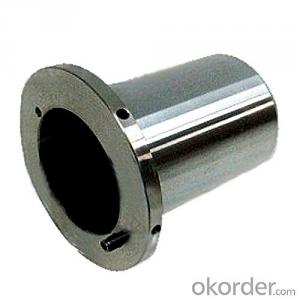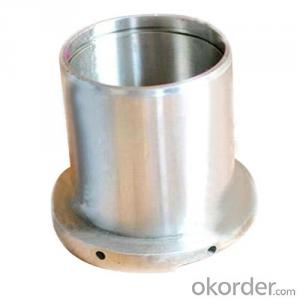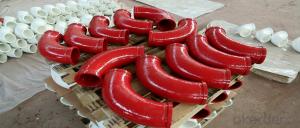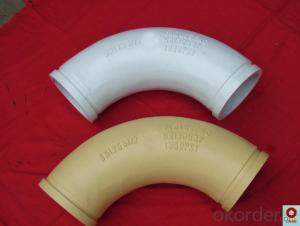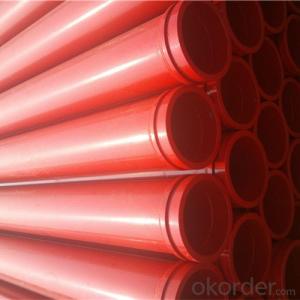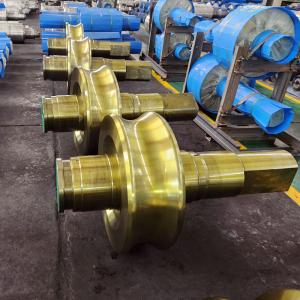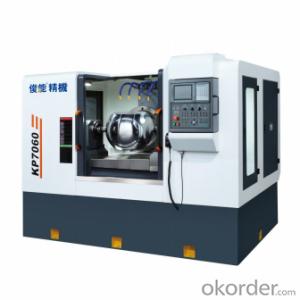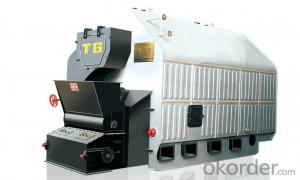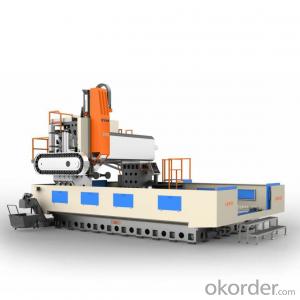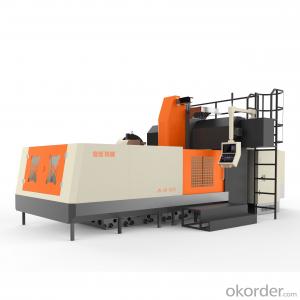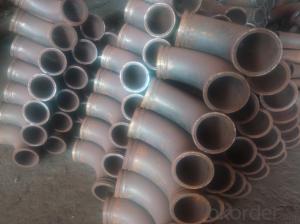Wear Sleeve Q90 Concrete Pump Parts High Quality
- Loading Port:
- Shanghai
- Payment Terms:
- TT OR LC
- Min Order Qty:
- 1 pc
- Supply Capability:
- 1000 pc/month
OKorder Service Pledge
OKorder Financial Service
You Might Also Like
Product information:
Wear Sleeve is the basic material among the frictional materials
They are widely used as the basic components for sealing
And the Wear Sleeve are widely adopted in petrochemical
industry due to its excellent performances such as wear ability, anti corrosion
Wear Sleeve is widely known for its durability and quality
It can withstand high pressure and is resistant to corrosion, so is used in water pumps, oil pumps and various other pumps
Today, Wear Sleeve has been playing an important role in the field of long working parts material
Salient features:
Special carbide grade developed for this application
Good cutting edge retention
Good functional lifespan
Applications:
Wear Sleeve is often used in concrete pumps.
Advantages of our products:
Made from 100% virgin raw material
Produced with advanced equipment
All products go through in-process and final inspection
Free technical service online
FAQ:
Q1: How long about delivery time?
A1: Normally we keep the raw materials for old customers and sometime we also keep stock products to make sure delivery time in any emergency cases.
Q2: How do we guarantee the quality of our pipes?
A2: We have established an advanced quality management system which conducts strict quality tests at every step, from raw materials to the final product. At the same time, we provide extensive follow-up service assurances as required.
Q3: How soon can we receive the product after purchase?
A3: Within three days of placing an order, we will book the vessel for goods. The specific shipping date is dependent upon international and government factors, but is typically 7 to 30 workdays.
Q4: If we can produce some pipes according to customers request?
A4: Yes, we can produce Concrete Placing Boom according to the difference country situations to make it suitable to the market and customers. We have very professional technical team to make the design.
Q5: How to make a quick resolution for after service?
A5: OKorder and our manufacture both have overseas branches all-around of world, If needed,
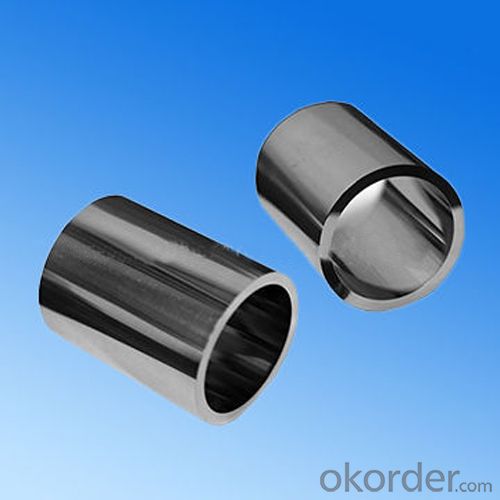

- Q:What are the signs of a damaged concrete pump accumulator?
- There exist multiple indications that point towards a damaged concrete pump accumulator. One of the most prevalent indications is a decline in the efficiency of pumping. Should you observe that the concrete pump is no longer able to effectively pump the concrete as it once did, it may be a sign of an impaired accumulator. Another indication is a reduction in the pressure of the pumped concrete. If you notice that the pressure is not as forceful as before, or if there are sudden pressure drops during pumping, it could signify an issue with the accumulator. Leaks surrounding the accumulator are also indicative of damage. Should you detect any fluid leaks around the accumulator, it may signify damage to the accumulator or worn-out seals. This can result in a loss of pressure and inefficiency in pumping. Unusual noises emanating from the concrete pump can also be an indication of a damaged accumulator. If you hear any peculiar noises, such as knocking or hissing sounds, it may be a consequence of a damaged accumulator. Lastly, if you observe any visible damage on the accumulator itself, such as cracks or dents, it is an obvious sign of damage. These damages can compromise the integrity of the accumulator and impact its performance. In summary, indications of a damaged concrete pump accumulator encompass decreased pumping efficiency, reduced pressure, leaks, unusual noises, and visible damages. Should you notice any of these indications, it is crucial to promptly address the issue to prevent further damage and ensure the smooth operation of the concrete pump.
- Q:What are the different types of concrete pump hopper screens?
- The different types of concrete pump hopper screens include wire mesh screens, perforated plate screens, and synthetic fiber screens.
- Q:What is the purpose of a concrete pump cylinder?
- The primary aim of a concrete pump cylinder is to generate the required pressure and force for the transportation and delivery of concrete to a desired location. It serves as a vital element within a concrete pump, facilitating the smooth and productive movement of concrete throughout the pump system. The cylinder operates by utilizing hydraulic pressure to propel the concrete through the pipeline, guaranteeing a continuous and seamless flow. Its significance lies in its contribution to construction projects, enabling accurate and efficient placement of concrete in diverse settings such as buildings, bridges, and other structures. By supplying the necessary power and pressure, the concrete pump cylinder ensures effortless and labor-saving transportation of concrete over long distances, both vertically and horizontally. Ultimately, its purpose revolves around enhancing the efficiency and precision of concrete delivery, thereby saving time and effort in construction endeavors.
- Q:Can I get spare parts for both concrete pumps with and without emergency stop systems?
- Yes, you can get spare parts for both concrete pumps with and without emergency stop systems. Most manufacturers and suppliers of concrete pumps offer a wide range of spare parts that are compatible with various models and types of pumps. These spare parts include components like hoses, pipes, valves, seals, and other essential parts that may need replacement due to wear and tear or damage. Whether your concrete pump has an emergency stop system or not, you should be able to find the necessary spare parts to keep your pump running smoothly. However, it is important to note that the availability of specific spare parts may vary depending on the brand, model, and age of your concrete pump. To ensure you get the right spare parts, it is advisable to consult the manufacturer or supplier of your concrete pump. They can provide you with a comprehensive list of spare parts and guide you in selecting the appropriate ones for your specific pump. Additionally, they may also be able to assist you with any technical support or troubleshooting related to your concrete pump.
- Q:How often should concrete pump control levers be inspected and replaced?
- Concrete pump control levers should be inspected regularly, ideally on a monthly basis, to ensure they are in proper working condition. However, the need for replacement would depend on various factors such as the quality of the lever, frequency of use, and any signs of wear or damage. If any issues or concerns arise during inspection, prompt replacement should be considered to maintain safe and efficient operation of the concrete pump.
- Q:What are the different types of concrete pump control system sensors?
- Concrete pump control systems utilize a variety of sensors to ensure smooth and efficient operation. These sensors are specifically designed to monitor different aspects of the pump's performance and provide real-time feedback to the control system. Common types of sensors used in concrete pump control systems include: 1. Pressure Sensors: These sensors measure the concrete pressure during pumping. They are typically installed in the discharge line and are crucial in preventing over-pressurization and potential damage to the pump or pipeline. 2. Flow Sensors: Flow sensors measure the rate at which concrete flows through the system. By monitoring the volume of concrete passing through per unit of time, these sensors enable the control system to regulate the pump's speed and output accordingly. 3. Level Sensors: Level sensors monitor the concrete level in the hopper or storage tank. They provide information about the concrete volume to prevent the pump from running dry or becoming overloaded, thus preventing pump cavitation or blockages. 4. Proximity Sensors: Proximity sensors detect the position of moving parts in the pump system, such as the boom or outriggers. They ensure safe operation by providing feedback to the control system and preventing collisions or obstructions. 5. Temperature Sensors: Temperature sensors monitor the concrete mix temperature. They help maintain the desired temperature range during pumping, which is crucial for workability and curing. Optimal concrete temperature contributes to the quality of the final product. In summary, these sensors work in harmony to provide precise feedback to the control system, ensuring efficient and safe operation of the concrete pump. By continuously monitoring and adjusting various parameters, these sensors optimize pumping performance and enhance productivity in concrete placement projects.
- Q:How do I troubleshoot issues related to concrete pump spare parts control systems?
- To troubleshoot issues related to concrete pump spare parts control systems, it is important to follow a systematic approach. Here are some steps you can take: 1. Identify the problem: Begin by clearly identifying the issue you are experiencing with the control system. Is it not working at all? Are there specific functions or components that are not functioning correctly? Understanding the problem will help guide your troubleshooting efforts. 2. Check power supply: Ensure that the control system is receiving proper power supply. Check the power source, circuit breakers, and fuses to ensure there are no interruptions or faults in the electrical supply. If needed, replace or repair any faulty components. 3. Inspect connections: Examine the wiring connections and terminals within the control system. Loose or damaged connections can cause issues with the functioning of the system. Tighten any loose connections and repair or replace any damaged wiring. 4. Review control settings: Verify that the control settings are correctly adjusted according to the manufacturer's specifications. Incorrect settings can lead to malfunctions or inefficient operation. Consult the user manual or contact the manufacturer for guidance on proper control settings. 5. Perform diagnostic tests: Many control systems have built-in diagnostic features or error codes that can help identify specific issues. Consult the system's manual to understand how to access and interpret these diagnostic tools. Run any recommended diagnostic tests to pinpoint the problem area. 6. Inspect sensors and actuators: Sensors and actuators play a crucial role in the control system's operation. Check these components for any damage, misalignment, or malfunctioning. Clean or replace sensors as needed and ensure the actuators are properly connected and functioning correctly. 7. Consult technical support: If you have followed the above steps and are still unable to resolve the issue, it may be helpful to contact the manufacturer's technical support team. They can provide expert guidance on troubleshooting the specific control system and may suggest additional steps or solutions. Remember to always prioritize safety when troubleshooting control systems. Ensure that the pump is turned off and disconnected from the power source before working on any electrical components. If you are unsure or uncomfortable with any troubleshooting steps, it is best to seek professional assistance.
- Q:What is the purpose of a concrete pump hopper grate?
- The main purpose of a concrete pump hopper grate is to safeguard the pump from any harm or obstruction that may be caused by large debris or foreign objects. Acting as a filter, this grate permits the passage of smaller particles and liquid concrete, while blocking bigger materials like rocks, wood, or other debris. By doing so, it ensures the pump's efficiency and functionality, guaranteeing a steady and uninterrupted flow of concrete. Moreover, the grate also provides protection for the pump's internal components, such as the impeller and valves, by preventing potential damage from larger objects. In summary, the concrete pump hopper grate holds immense significance in preserving the quality and dependability of the pumping process, effectively averting potential issues and ensuring the successful placement of concrete.
- Q:Are there any specific troubleshooting steps for identifying issues with concrete pump spare parts?
- Yes, there are specific troubleshooting steps for identifying issues with concrete pump spare parts. These steps typically involve inspecting and testing the spare parts for any visible damage, checking the compatibility of the parts with the concrete pump system, ensuring proper installation and alignment, and testing the functionality of the parts under normal operating conditions. Additionally, consulting the manufacturer's guidelines and seeking professional assistance can also help in identifying any issues with concrete pump spare parts.
- Q:How long do concrete pump pipes typically last?
- The lifespan of concrete pump pipes generally ranges from 25,000 to 40,000 cubic meters of pumped concrete. However, various factors like pipe quality, concrete type, pumping pressure, and maintenance practices can affect this duration. Regular inspections, cleaning, and appropriate storage methods can effectively prolong the lifespan of these pipes. Ultimately, it is crucial to monitor their wear and tear and promptly replace them as needed to ensure the efficiency and safety of concrete pumping operations.
1. Manufacturer Overview |
|
|---|---|
| Location | |
| Year Established | |
| Annual Output Value | |
| Main Markets | |
| Company Certifications | |
2. Manufacturer Certificates |
|
|---|---|
| a) Certification Name | |
| Range | |
| Reference | |
| Validity Period | |
3. Manufacturer Capability |
|
|---|---|
| a)Trade Capacity | |
| Nearest Port | |
| Export Percentage | |
| No.of Employees in Trade Department | |
| Language Spoken: | |
| b)Factory Information | |
| Factory Size: | |
| No. of Production Lines | |
| Contract Manufacturing | |
| Product Price Range | |
Send your message to us
Wear Sleeve Q90 Concrete Pump Parts High Quality
- Loading Port:
- Shanghai
- Payment Terms:
- TT OR LC
- Min Order Qty:
- 1 pc
- Supply Capability:
- 1000 pc/month
OKorder Service Pledge
OKorder Financial Service
Similar products
New products
Hot products
Hot Searches
Related keywords
